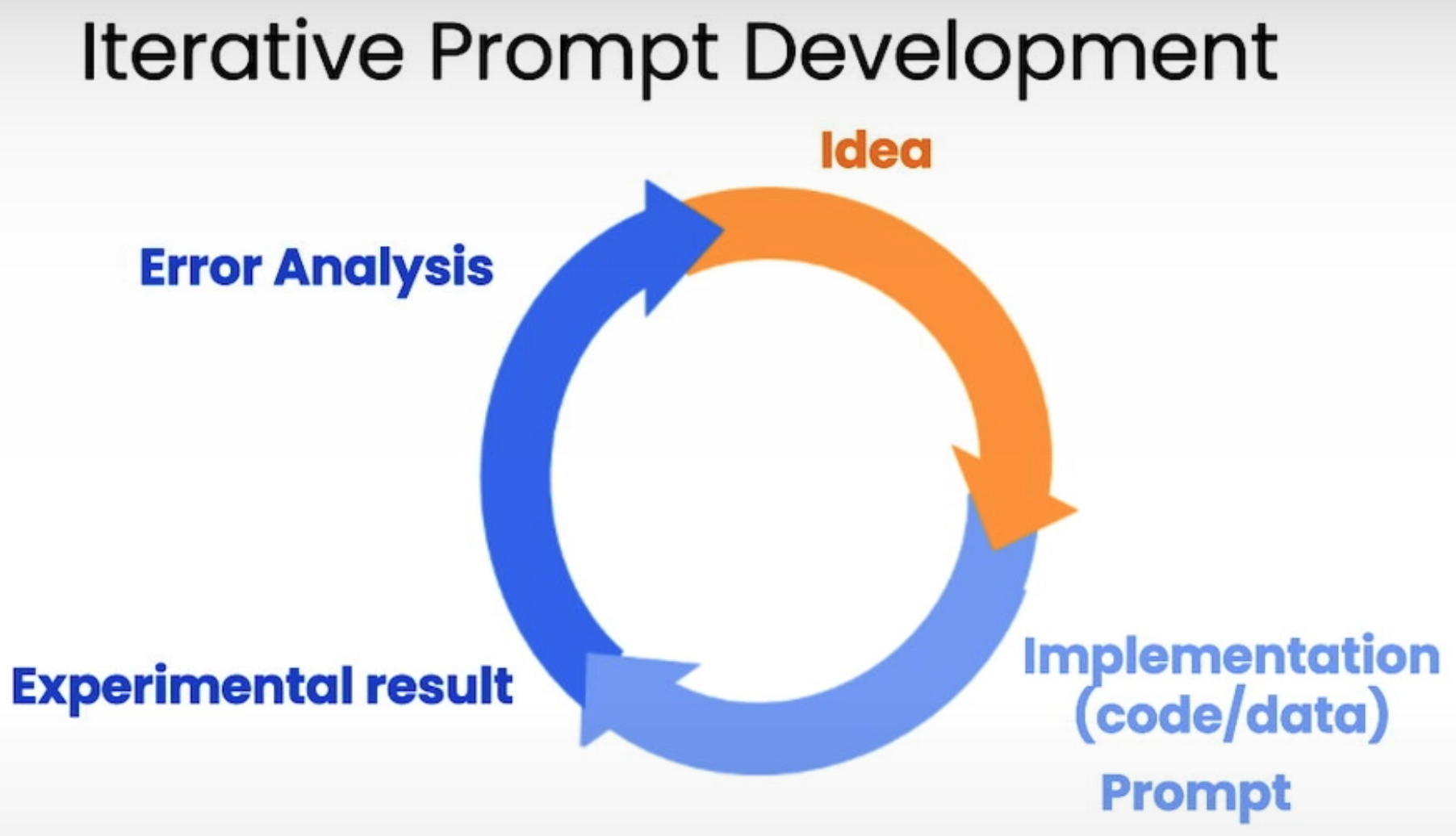Prompt Engineering for Developers
Two types of LLMs
- Base LLM
- predicts next word based on text training data
- Instruction tuned LLM
- fine-tune on instructions and good attempts at following instructions
- e.g.Reinforcement learning with human feedback (RLHF)
Prompting Principles
Principle 1: Write clear and specific instructions
- Tactic 1: Use delimiters to clearly indicate distinct parts of the input
- Delimiters can be anything like: ```, """, < >,
- Delimiters can be anything like: ```, """, < >,
- Tactic 2: Ask for a structured output (JSON, HTML, etc)
- Tactic 3: Ask the model to check whether conditions are satisfied
- Tactic 4: "Few-shot" prompting
- provide desired output before giving the prompt
Principle 2: Give the model time to “think”
- Tactic 1: Specify the steps required to complete a task
- step 1: ...
- step 2: ...
- Tactic 2: Instruct the model to work out its own solution before rushing to a conclusion
Iterative Prompt Development

Capabilities of LLM
Summarizing
- Summarizing
- Extracting
Inferring
examples:
- “What is the sentiment of the following …”
- “Determine five topics that are being discussed in the following test…”
Transforming
- Translation
- Tone Transformation
- File Format Conversion
- Spellcheck/Grammar Check
Expanding
= generate long piece of text from short piece of text
Temperature
= Degree of randomness of the model
- use temperature 0 for tasks that require reliability, predictability
- use temperature >0 for tasks that require variety